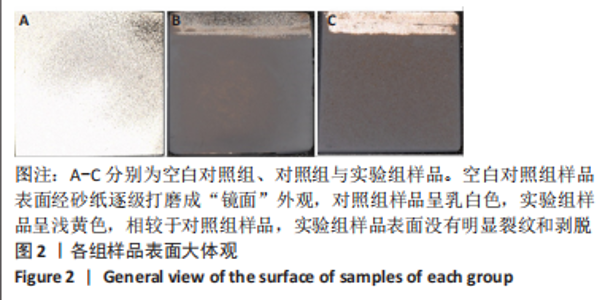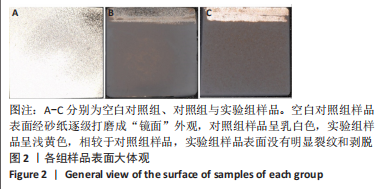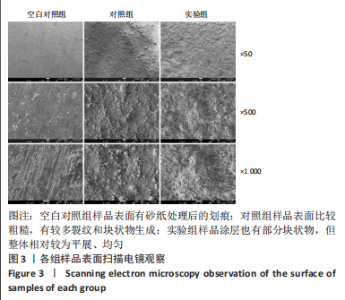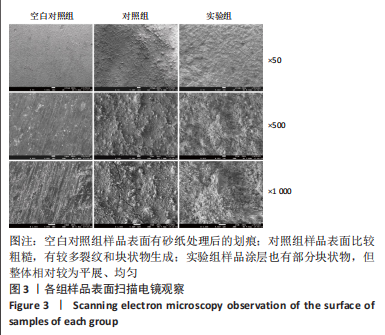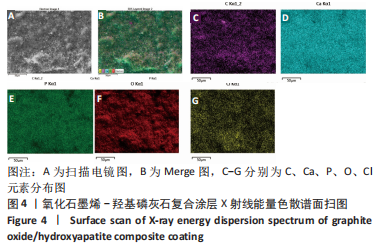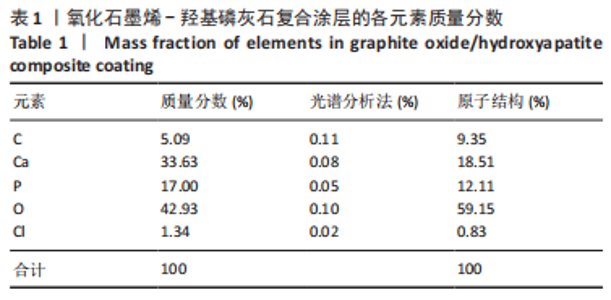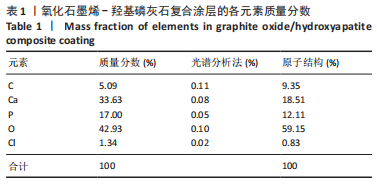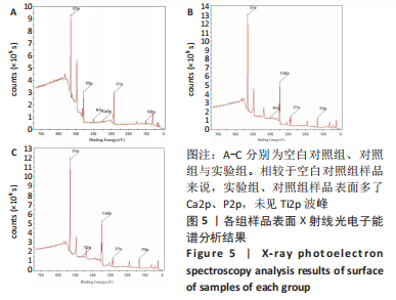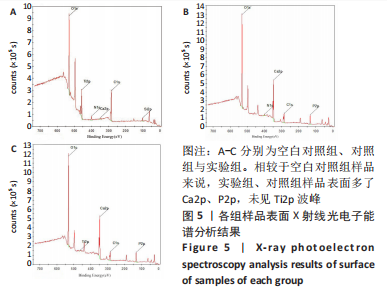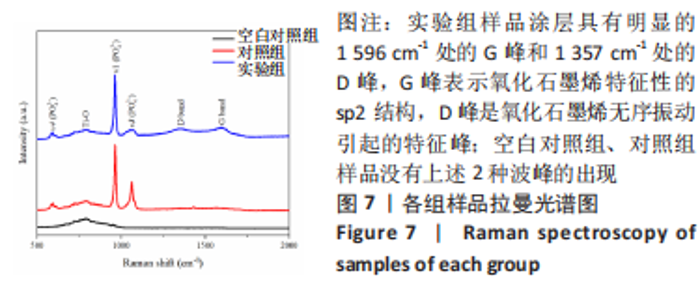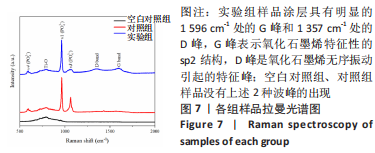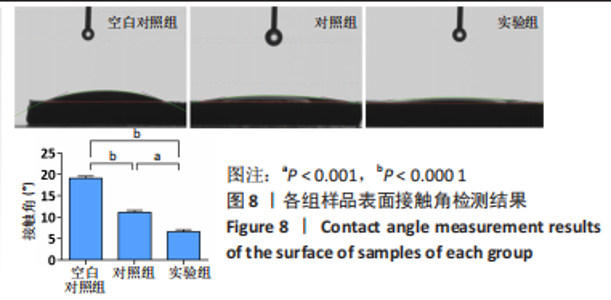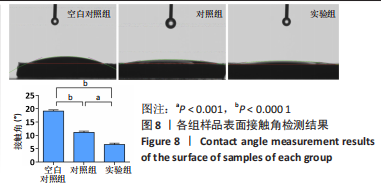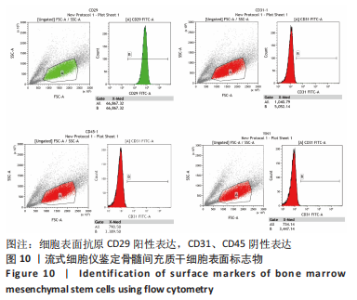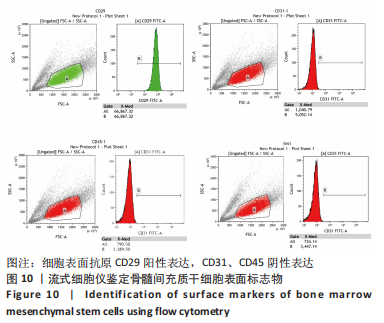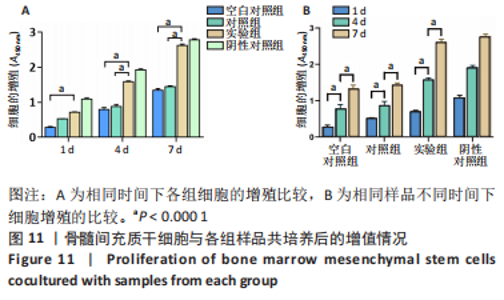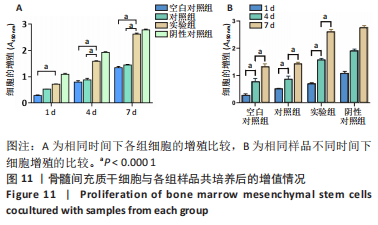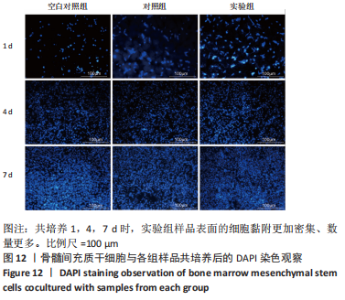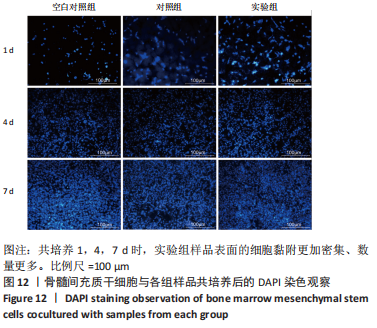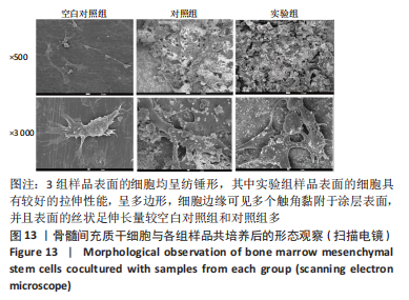Chinese Journal of Tissue Engineering Research ›› 2024, Vol. 28 ›› Issue (10): 1477-1483.doi: 10.12307/2024.259
Physicochemical properties and biocompatibility of graphene oxide-hydroxyapatite composite coating materials
Lyu Shangyi1, 2, He Huiyu1, 2, Wufanbieke · Baheti1, 3, Yang Quan1, 2, Ma Lisha1, 2, Han Xiangzhen1, 2
- 1Department of Prosthodontics, First Affiliated Hospital (Affiliated Stomatological Hospital) of Xinjiang Medical University, Urumqi 830054, Xinjiang Uygur Autonomous Region, China; 2Institute of Stomatology, Urumqi 830054, Xinjiang Uygur Autonomous Region, China; 3Department of Stomatology, Xinjiang Uygur Autonomous Region Hospital, Urumqi 830000, Xinjiang Uygur Autonomous Region, China
-
Received:2023-02-02Accepted:2023-04-14Online:2024-04-08Published:2023-08-17 -
Contact:Han Xiangzhen, Attending physician, Department of Prosthodontics, First Affiliated Hospital (Affiliated Stomatological Hospital) of Xinjiang Medical University, Urumqi 830054, Xinjiang Uygur Autonomous Region, China; Institute of Stomatology, Urumqi 830054, Xinjiang Uygur Autonomous Region, China -
About author:Lyu Shangyi, Master candidate, Department of Prosthodontics, First Affiliated Hospital (Affiliated Stomatological Hospital) of Xinjiang Medical University, Urumqi 830054, Xinjiang Uygur Autonomous Region, China; Institute of Stomatology, Urumqi 830054, Xinjiang Uygur Autonomous Region, China -
Supported by:2021 Science and Technology Aid Plan for Xinjiang Uygur Autonomous Region, No. 2020E02133 (to HXZ)
CLC Number:
Cite this article
Lyu Shangyi, He Huiyu, Wufanbieke · Baheti, Yang Quan, Ma Lisha, Han Xiangzhen. Physicochemical properties and biocompatibility of graphene oxide-hydroxyapatite composite coating materials[J]. Chinese Journal of Tissue Engineering Research, 2024, 28(10): 1477-1483.
share this article
Add to citation manager EndNote|Reference Manager|ProCite|BibTeX|RefWorks
| [1] 于婉琦,周延民,赵静辉口腔种植体新材料的研究现状[J].国际口腔医学杂志,2019,46(4):488-496. [2] NAKAYAMA Y, YAMASHITA Y, SHIMOHIRA D, et al. A long-term clinical statistical analysis of machined -surface Branemark implants used in patients undergoingoral and maxillofacial surgery. J Oral Maxillofac Surg Med Pathol. 2019;31(4):237-240. [3] 贾胜男,邸萍,林野.“All-on-4”种植即刻固定修复后下颌骨生物学改建模式的影像学研究[J].口腔医学研究,2020,36(10):957-961. [4] MEHMET T, BURAK D, MEHMET G, et al. Effect of hydroxyapatite: zirconia volume fraction ratio on mechanical and corrosive properties of Ti-matrix composite scaffolds. T Nonferr Metal Soc. 2022;32(3): 882-894. [5] SHARMA SS, SHARMA BB, PARASHAR A. Mechanical and fracture behavior of water submerged graphene. J Appl Phys. 2019;125(21): 215107.1-215107.8. [6] LIAO C, LI Y, TJONG S. Graphene Nanomaterials: Synthesis, Biocompatibility, and Cytotoxicity. Int J Mol Sci. 2018;19(11):3564. [7] QI Z, CHEN X, GUO W, et al. Theanine-Modified Graphene Oxide Composite Films for Neural Stem Cells Proliferation and Differentiation. J Nanomater. 2020;2020(4):1-10. [8] ECKHART KE, HOLT BD, LAURENCIN MG, et al. Covalent conjugation of bioactive peptides to graphene oxide for biomedical applications. Biomater Sci. 2019;7(9):3876-3885. [9] JAIDEV LR, KUMAR S, CHATTERJEE K. Multi-biofunctional polymer graphene composite for bone tissue regeneration that elutes copper ions to impart angiogenic, osteogenic and bactericidal properties. Colloids Surf B Biointerfaces. 2017;159:293-302. [10] LI B, YUAN Z, CHANG F, et al. Preparation and characterization of Cu-GO and Cu-GO-YSZ nanocomposite coating by electrochemical deposition for improved mechanical and anti-corrosion properties. Surf Coat Technol. 2022:439. DOI: 10.1016/j.surfcoat.2022.128441 [11] URIBE R, UVILLÚS A, FERNÁNDEZ L, et al. Electrochemical deposition of hydroxyapatite on stainless steel coated with tantalum/tantalum nitride using simulated body fluid as an electrolytic medium. Coatings. 2022;12(4): 440. [12] ABDALLAH B. Recent Approaches to Isolating and Culturing Mouse Bone Marrow-derived Mesenchymal Stromal Stem Cells. Curr Stem Cell Res Ther. 2021;16(5):599-607. [13] WANG X, QIANG A, TIAN X, et al. 3D Bioprinting Technologies for Hard Tissue and Organ Engineering. Materials (Basel). 2016;9(10):802. [14] XIAO DQ, ZHANG JW, ZHANG CD, et al. The role of calcium phosphate surface structure in osteogenesis and the mechanisms involved. Acta Biomater. 2020;106:22-33. [15] KONISHI T, HONDA M, NAGAYA M, et al. Injectable chelate-setting hydroxyapatite cement prepared by using chitosan solution: fabrication, material properties, biocompatibility, and osteoconductivity. J Biomater Appl. 2017;31(10): 1319-1327. [16] DE PAULA GA, SILVA GC, VILAÇA ÊL, et al. Biomechanical behavior of tooth-implant supported prostheses with different implant connections: a nonlinear finite element analysis. Implant Dent. 2018; 27(3):294-302. [17] HSU KW, WEI PC, CHEN YL, et al. Retrospective and Clinical Evaluation of Aftermarket CAD/CAM Titanium Abutments Supporting Posterior Splinted Prostheses and Single Crowns. Int J Oral Maxillofac Implants. 2019;34(5):1161-1168. [18] 兰静,李彪,孙良丰,等.100 例牙列缺损患者口腔种植修复并发症及其危险因素探讨[J].中国口腔种植学杂志,2020,25(1):20-23. [19] KHAN MA, RAZAK SA, ARJAN WA, et al. Recent Advances in Biopolymeric Composite Materials for Tissue Engineering and Regenerative Medicines: A Review. Molecules. 2021;26(3):619. [20] LI M, LIU J, CUI X, et al. Osteogenesis effects of magnetic nanoparticles modified-porous scaffolds for the reconstruction of bone defect after bone tumor resection. Regen Biomater. 2019;6(6):373-381. [21] SHI C, GAO J, WANG M, et al. Functional hydroxyapatite bioceramics with excellent osteoconductivity and stern-interface induced antibacterial ability. Biomater Sci. 2016;4(4):699-710. [22] STANGO S, KARTHICK D, SWAROOP S, et al. Development of hydroxyapatite coatings on laser textured 316 LSS and Ti-6Al-4V and its electrochemical beHAPvior in SBF solution for orthopedic applications. Ceram Int. 2017;44(3):3149-3160. [23] GOPI D, INDIRA J, KAVITHA L. A comparative study on the direct and pulsed current electrodeposition of hydroxyapatite coatings on surgical grade stainless steel. Surf Coat Technol. 2012;206(11-12):2859-2869. [24] SHI YY, LI M, LIU Q, et al. Electrophoretic deposition of graphene oxide reinforced chitosan–hydroxyapatite nanocomposite coatings on Ti substrate. J Mater Sci Mater Med. 2016;27(3):48. [25] BARADARAN S, MOGHADDAM E, BASIRUN WJ, et al. Mechanical properties and biomedical applications of a nanotube hydroxyapatite-reduced graphene oxide composite. Carbon. 2014;69:32-45. [26] GAO F, XU C, HU H, et al. Biomimetic synthesis and characterization of hydroxyapatite/graphene oxide hybrid coating on Mg alloy with enhanced corrosion resistance. Mater Lett. 2015;138:25-28. [27] WU C, XIA L, HAN P, et al. Graphene-oxide-modified β-tricalcium phosphate bioceramics stimulate in vitro and in vivo osteogenesis. Carbon. 2015;93:116-129. [28] PAPI M. Graphene-Based Materials: Biological and Biomedical Applications. Int J Mol Sci. 2021;22(2):672. [29] AZADIAN E, ARJMAND B, ARDESHIRYLAJIMI A, et al. Polyvinyl alcohol modified polyvinylidene fluoride‐graphene oxide scaffold promotes osteogenic differentiation potential of human induced pluripotent stem cells. J Cell Biochem. 2020;121(5-6):3185-3196. [30] ARNOLD AM, HOLT BD, DANESHMANDI L, et al. Phosphate graphene as an intrinsically osteoinductive scaffold for stem cell-driven bone regeneration. Proc Natl Acad Sci U S A. 2019;116(11):4855-4860. [31] JINLONG L, TONGXIANG L, CHEN W. Investigation of hydrogen evolution activity for the nickel, nickel-molybdenum nickel-graphite composite and nickel-reduced graphene oxide composite coatings. Appl Surf Sci. 2016;366:353-358. [32] KARIMI N, KHARAZIHA M, RAEISSI K. Electrophoretic deposition of chitosan reinforced graphene oxide-hydroxyapatite on the anodized titanium to improve biological and electrochemical characteristics. Mater Sci Eng C Mater Biol Appl. 2019;98:140-152. [33] 刘春影,付丽,汪汉池,等.石墨烯衍生物促进骨再生的研究进展[J].中华口腔医学杂志,2019,54(9):642-645. [34] LIANG C, LUO Y, YANG G, et al. Graphene oxide hybridized nHAC/PLGA scaffolds facilitate the proliferation of MC3T3-E1 cells. Nanoscale Res Lett. 2018;13(1):15. [35] HE Y, LI Y, CHEN G, et al. Concentration-dependent cellular behavior and osteogenic differentiation effect induced in bone marrow mesenchymal stem cells treated with magnetic graphene oxide. Biomed Mater Res A. 2020;108(1):50-60. |
| [1] | Liu Anhong, Cai Mengmeng, Han Xiao, Wang Zhanhui. Research status on element selection of medical magnesium alloy [J]. Chinese Journal of Tissue Engineering Research, 2024, 28(5): 777-782. |
| [2] | Wang Wu, Fan Xiaolei, Xie Jie, Hu Yihe, Zeng Min. Hydroxyapatite-polyvinyl alcohol/collagen-chitosan-gelatin composite hydrogel for repairing rabbit osteochondral defect [J]. Chinese Journal of Tissue Engineering Research, 2024, 28(5): 682-689. |
| [3] | Lin Feng, Cheng Ling, Gao Yong, Zhou Jianye, Shang Qingqing. Hyaluronic acid hydrogel-encapsulated bone marrow mesenchymal stem cells promote cardiac function in myocardial infarction rats (III) [J]. Chinese Journal of Tissue Engineering Research, 2024, 28(3): 355-359. |
| [4] | Bi Yujie, Ma Dujun, Peng Liping, Zhou Ziqiong, Zhao Jing, Zhu Houjun, Zhong Qiuhui, Yang Yuxin. Strategy and significance of Chinese medicine combined with medical hydrogel for disease treatment [J]. Chinese Journal of Tissue Engineering Research, 2024, 28(3): 419-425. |
| [5] | Xu Jingzhi, Wang Wenbo, Sun Huiwen, Gu Yong. In vitro experiment of stem cell engineered two-sided anisotropic electrospun membranes for promoting dural repair [J]. Chinese Journal of Tissue Engineering Research, 2024, 28(10): 1540-1546. |
| [6] | Qi Junqiang, Wang Haotian, Xiao Bing, Liu Jia, Liu Yifei, Xu Guohua. Characteristics and problems of hydroxyapatite/polymer bone repair material [J]. Chinese Journal of Tissue Engineering Research, 2024, 28(10): 1592-1598. |
| [7] | Fan Yongjing, Wang Shu, Jin Wulong. Characteristics, advantages and application of osteogenic differentiation of jaw bone marrow mesenchymal stem cells [J]. Chinese Journal of Tissue Engineering Research, 2024, 28(1): 100-106. |
| [8] | Wei Yurou, Tian Jiaqing, He Xianshun, Zhan Zhiwei, Wei Tengfei, Lin Tianye, He Wei, Wei Qiushi. Effect of lentiviral silencing of Piezo1 on osteogenic differentiation and TAZ expression in human bone marrow mesenchymal stem cells [J]. Chinese Journal of Tissue Engineering Research, 2024, 28(1): 12-19. |
| [9] | Zhang Yuanshu, He Xu, Xue Yuan, Jin Yesheng, Wang Kai, Shi Qin, Rui Yongjun. Irisin alleviates palmitic acid-induced osteogenic inhibition in bone marrow mesenchymal stem cells [J]. Chinese Journal of Tissue Engineering Research, 2024, 28(1): 26-31. |
| [10] | Zheng Rongjiong, Deng Zerun, Han Dan, Sun Lihua. Mechanism underlying rat hepatocyte apoptosis regulated by exosomes derived from bone marrow mesenchymal stem cells [J]. Chinese Journal of Tissue Engineering Research, 2024, 28(1): 44-49. |
| [11] | Dang Yi, Du Chengyan, Yao Honglin, Yuan Nenghua, Cao Jin, Xiong Shan, Zhang Dingmei, Wang Xin. Hormonal osteonecrosis and oxidative stress [J]. Chinese Journal of Tissue Engineering Research, 2023, 27(9): 1469-1476. |
| [12] | Zhang Tingting, Liu Juan, Zhang Xu. Bioactivity of phase-transition lysozyme for surface modification of zirconia all-ceramic implant material mediating hydroxyapatite coating [J]. Chinese Journal of Tissue Engineering Research, 2023, 27(7): 1043-1049. |
| [13] | Liu Wentao, Feng Xingchao, Yang Yi, Bai Shengbin. Effect of M2 macrophage-derived exosomes on osteogenic differentiation of bone marrow mesenchymal stem cells [J]. Chinese Journal of Tissue Engineering Research, 2023, 27(6): 840-845. |
| [14] | Long Yanming, Xie Mengsheng, Huang Jiajie, Xue Wenli, Rong Hui, Li Xiaojie. Casein kinase 2-interaction protein-1 regulates the osteogenic ability of bone marrow mesenchymal stem cells in osteoporosis rats [J]. Chinese Journal of Tissue Engineering Research, 2023, 27(6): 878-882. |
| [15] | Li Qicheng, Deng Jin, Fu Xiaoyang, Han Na. Effects of bone marrow mesenchymal stem cells-derived exosomes on hypoxia-treated myoblasts [J]. Chinese Journal of Tissue Engineering Research, 2023, 27(6): 853-859. |
| Viewed | ||||||
|
Full text |
|
|||||
|
Abstract |
|
|||||
